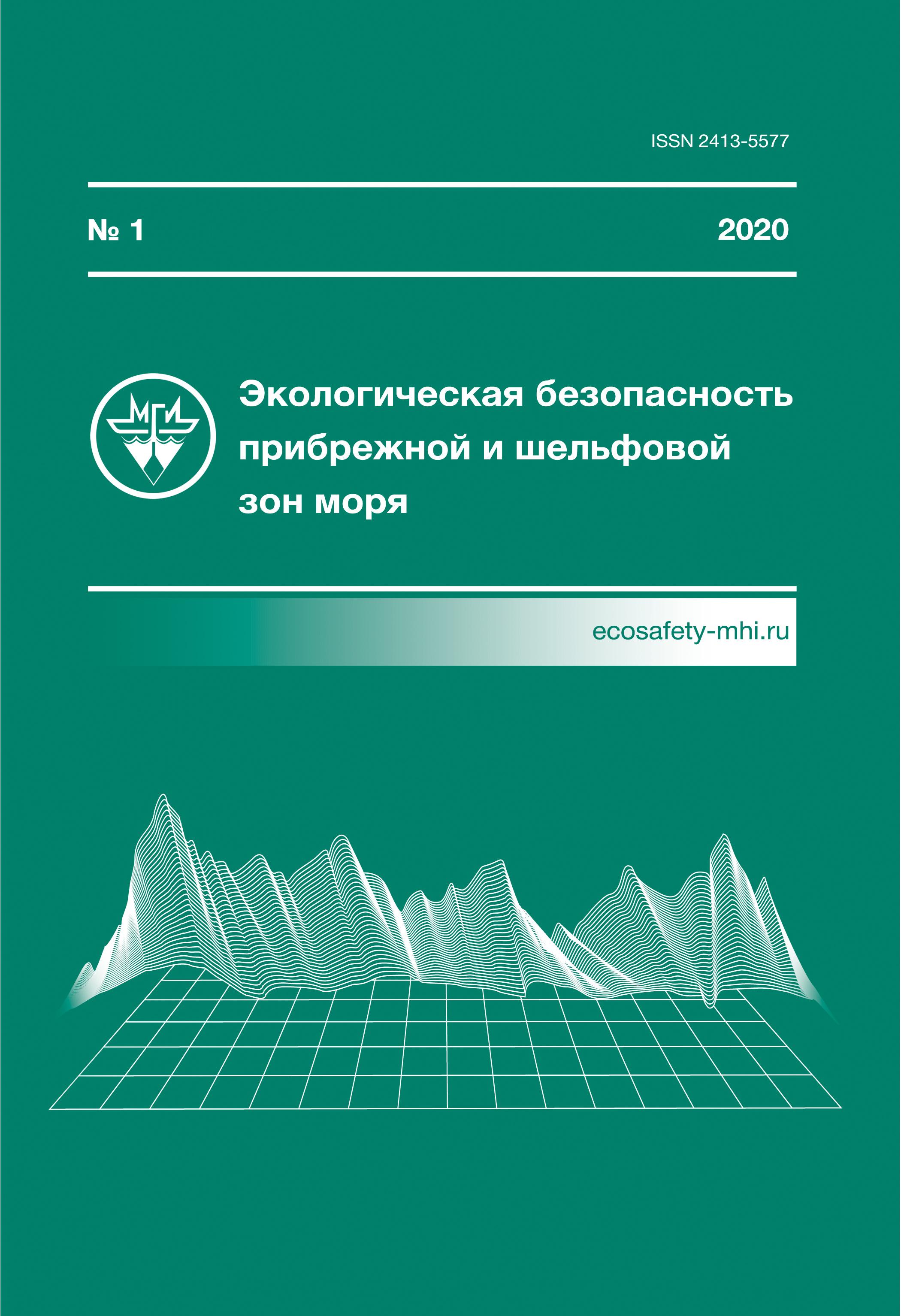Russian Federation
Russian Federation
Russian Federation
Russian Federation
The Stokes drift generated by surface waves affects many physical processes occurring in the coastal zone of the sea, including heat and salt transport, as well as transport of pollutants. Taking into account the parameters of sea currents caused by the Stokes drift is important for a more correct description of the general hydrodynamic structure of coastal waters. Moreover, sea currents generated by surface waves make a significant contribution to the processes of accumulation and redistribution of pollutants in the coastal zone of the sea. The article presents the results of the study of the Stokes drift on the northeastern shelf of the Black Sea near Gelendzhik for the period from 2003 to 2022. Seasonal and interannual features of variability of Stokes current velocities and directions have been identified. It has been shown that from December to April, excluding February, the Stokes transport has comparable repeatability in directions towards the coast, away from the coast, and towards the northwest. In February, the main flow tends to the open sea. In May and June, the repeatability of currents towards the coastline increases significantly, with the contribution of currents to the southeast increasing at the beginning of summer. In July, the currents directed to the southeast and away from the coast become almost identical in terms of repeatability. From August to November, the proportion of currents directed away from the coast increases with a gradual decrease in the repeatability of currents towards the southeast. In multi-year terms, the flow directed away from the coast to the open sea prevails (repeatability of 34.3%). The same flow has the highest mean velocity (0.053 m/s). Repeatability of the long-shore currents directed towards the southeast and northwest is almost the same, but the currents towards the northwest are much more intense.
wind waves, Stokes drift, coastal zone, spread of pollutants, anthropogenic pollution
1. Clarke A., Van Gorder S. The relationship of near-surface flow, Stokes drift and the wind stress // Journal of Geophysical Research: Oceans. 2018. Vol. 123, iss. 7. P. 4680-4692. DOI:https://doi.org/10.1029/2018JC014102
2. Observations and a model of undertow over the inner continental shelf / S. Lentz [ et al.] // Journal of Physical Oceanography. 2008. Vol. 38, iss. 11. P. 2341-2357. DOI:https://doi.org/10.1175/2008JPO3986.1
3. Lentz S., Fewings M. The windand wave-driven inner-shelf circulation // Annual Review of Marine Science. 2012. Vol. 4. P. 317-343. DOI:https://doi.org/10.1146/annurevmarine-120709-142745
4. Sullivan P., McWilliams J. Dynamics of winds and currents coupled to surface waves // An nual Review of Fluid Mechanics. 2010. Vol. 42. P. 19-42. DOI:https://doi.org/10.1146/annurevfluid-121108-145541 EDN: https://elibrary.ru/NCAAJZ
5. Effects of Eulerian current, Stokes drift and wind while simulating surface drifter trajec tories in the Baltic Sea / O. Pärn [et al.] // Oceanologia. 2023. Vol. 65, iss. 3. P. 453- 4 65. DOI:https://doi.org/10.1016/j.oceano.2023.02.001 EDN: https://elibrary.ru/LWSGQE
6. Selective transport of microplastics and mesoplastics by drifting in coastal waters / A. Isobe [et al.] // Marine Pollution Bulletin. 2014. Vol. 89, iss. 1-2. P. 324-330. DOI:https://doi.org/10.1016/j.marpolbul.2014.09.041
7. Fate of microplastics and mesoplastics carried by surface currents and wind waves: A numerical model approach in the Sea of Japan / S. Iwasaki [et al.] // Marine Pollution Bulletin. 2017. Vol. 121, iss. 1-2. P. 85-96. DOI:https://doi.org/10.1016/j.marpolbul.2017.05.057
8. The influence of Stokes drift on oil spills: Sanchi oil spill case / Y. Yang [et al.] // Acta Oceanologica Sinica. 2021. Vol. 40, iss. 10. P. 30-37. DOI:https://doi.org/10.1007/s13131-021-1889-9 EDN: https://elibrary.ru/IZYTXW
9. Bosi S., Broström G., Roquet F. The Role of Stokes drift in the dispersal of North Atlantic surface marine debris // Frontiers in Marine Science. 2021. Vol. 8. 697430. DOI:https://doi.org/10.3389/fmars.2021.697430 EDN: https://elibrary.ru/WBWQDT
10. McWilliams J., Restrepo J. The wave-driven ocean circulation // Journal of Physi cal Oceanography. 1999. Vol. 29, iss. 10. P. 2523-2540. <2523:TWDOC>2.0.CO;2. DOI:https://doi.org/10.1175/1520-0485(1999)029
11. Markova, N.V. and Bagaev, A.V., 2016. The Black Sea Deep Current Velocities Estimated from the Data of Argo Profiling Floats. Physical Oceanography, (3), pp. 23–35. DOI:https://doi.org/10.22449/1573-160X-2016-3-23-35
12. Surface Stokes drift in the Baltic Sea based on modelled wave spectra / L. Tuomi [et al.] / Ocean Dynamics. 2017. Vol. 68, iss. 1. P. 17-33. URL: https://link.springer.com/article/ (date of access: 20.02.2024). DOI:https://doi.org/10.1007/s10236-017-1115-7 EDN: https://elibrary.ru/FBKUAX
13. A third-generation spectral wave model using an unstructured finite volume tech nique / O. R. Sørensen [et al.] // Coastal Engineering 2004 - Proceedings of th the 29 International Conference. World Scientific, 2005. P. 894-906. DOI:https://doi.org/10.1142/9789812701916_0071
14. Divinsky B. V., Kosyan R. D. Spatiotemporal variability of the Black Sea wave climate in the last 37 years // Continental Shelf Research. 2017. Vol. 136. P. 1-19. DOI:https://doi.org/10.1016/j.csr.2017.01.008 EDN: https://elibrary.ru/YVCOWL
15. Breivik Ø., Christensen K. A Combined stokes drift profile under swell and wind sea // Journal of Physical Oceanography. 2020. Vol. 50, iss. 10. P. 2819-2833. DOI:https://doi.org/10.1175/JPO-D-20-0087.1
















